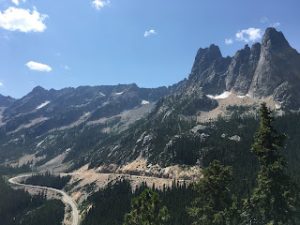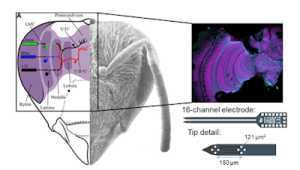David Villalobos
In the past few months, two pieces of my research in Costa Rica have been published (bats) or accepted for publication (rodents).
The bat research was published at CheckList: The Journal of Biodiversity data and tells the story of how we increased the number of bats species detected in Costa Rica. Our target for this project were two species of free-tailed bats (Chiroptera: Molossidae) whose presence in Costa Rica was hotly debated due to the small number of specimens actually found in Costa Rica. Using geographical and morphological evidence, this paper shows how we confirmed the presence of Nyctinomops laticaudatusand Eumops nanusin the country. Although Chiroptera is considered to be a fairly well studied taxa, our findings show that more work needs to be done to understand the biogeography of these organisms.
In the second paper (keep an eye out for it!), we wanted to understand the prevalence and host associations of the herpes virus. We were specifically interested in looking at this explored the beta and gamma diversity of herpesviruses in Neotropical rodents from Costa Rica, thus in order to better understand the prevalence and host associations with this group of mammals. Exploratory studies like this in rodents are useful, especially because these small mammals have been associated with many viruses, some of them zoonotic and with important impacts for human health. The short communication of our research will be published in the Journal of Wildlife Diseases.
Alex Lowe
This study takes place at the McAbee Fossil Beds, in south-central British Columbia, a site with beautifully preserved fossil plants and insects. The site is interesting because it preserves plants that lived ~53 million years ago (early Eocene) in a globally warm world with no permanent ice on either pole, within a volcanically-active and upland landscape. Also, plant families dominant in the temperate latitudes of North America and Europe today (e.g., the birch family [Betulaceae], the rose family [Rosaceae]) were diversifying in these forests at this time.We sampled fossil plants from two discrete horizons, separated from each other by millennia, to reconstruct the forest at two snapshots in time and understand controls of climate and volcanism. We reconstructed the ancient climate using the morphology of fossil leaves and found it to be similar to modern day Seattle, despite existing then at higher elevations. Our fossil plant collections show these forests were of high diversity, containing plants found today in eastern U.S. deciduous forests (e.g., alder [Alnus], birch [Betula], elm [Ulmus], beech [Fagus], pine [Pinus]) and eastern China (e.g., Ginkgo, Metasequoia). In fact, the diversity was comparable to modern tropical forests and to ancient forests of the same age thought to have had much warmer climates than McAbee. This suggests that the upland volcanic landscape, with its frequent disturbance, high nutrient input, and many microhabitats was likely influencing high diversity. Interestingly, the plant community did not change much between the two horizons (either did climate) despite a dynamic volcanic disturbance regime through time, attesting to resiliency in the plant community. The upland and volcanic character of this ancient environment may have imparted important influences on the evolution of many prevalent modern temperate plant families.


